Adirondack Nature Trails:
Black Pond Trail
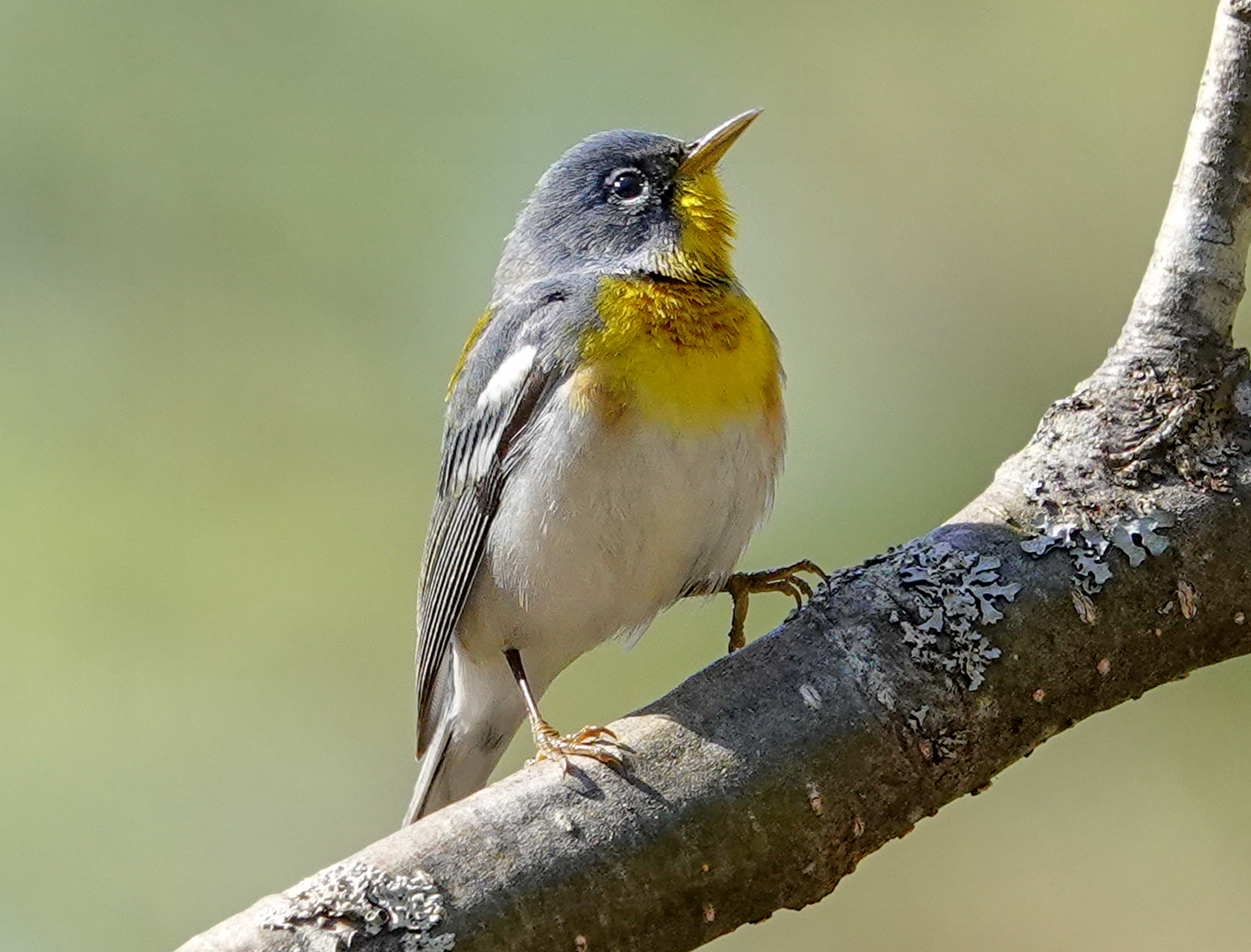
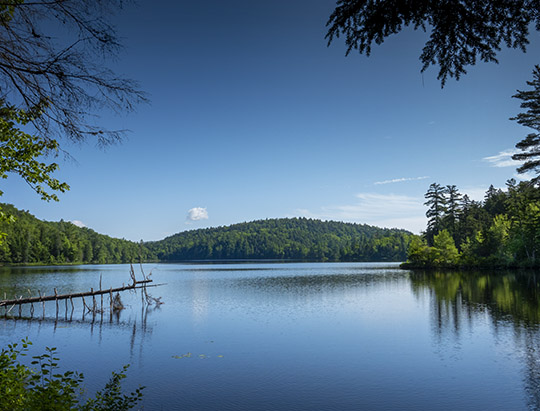
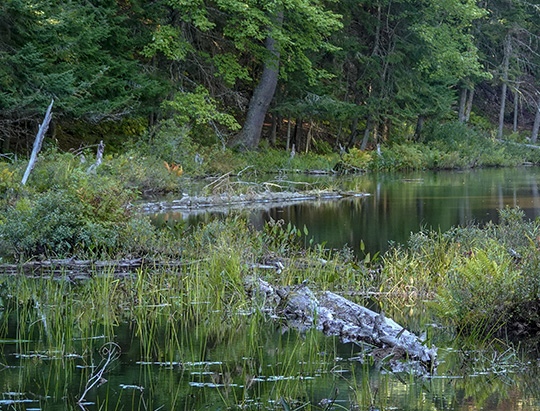
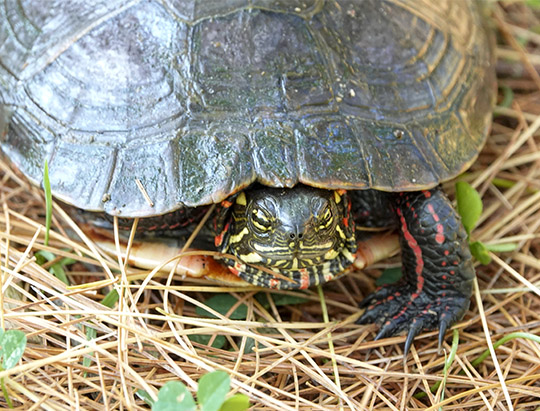
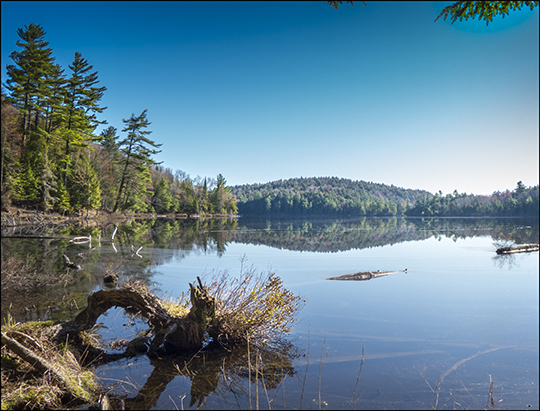
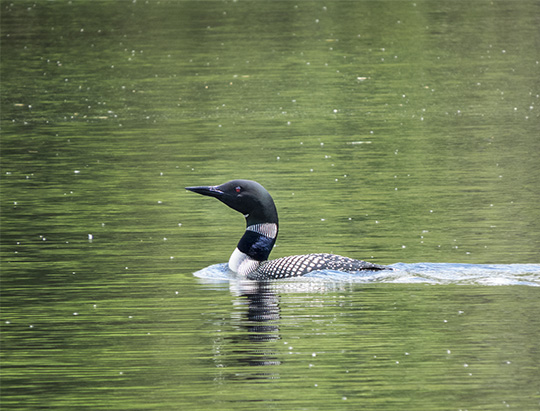
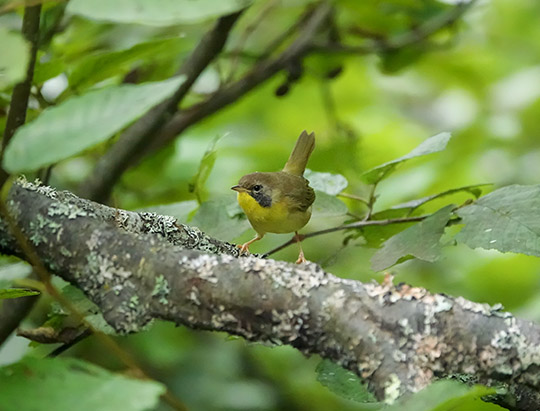
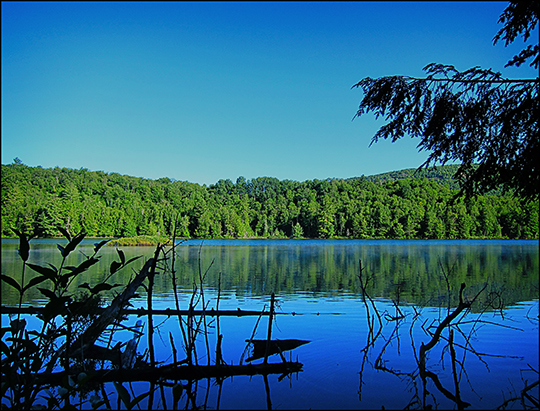
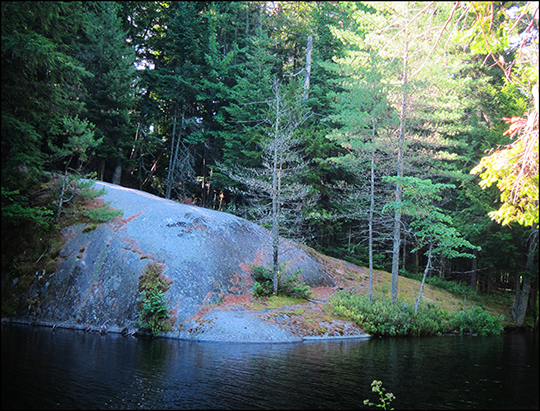
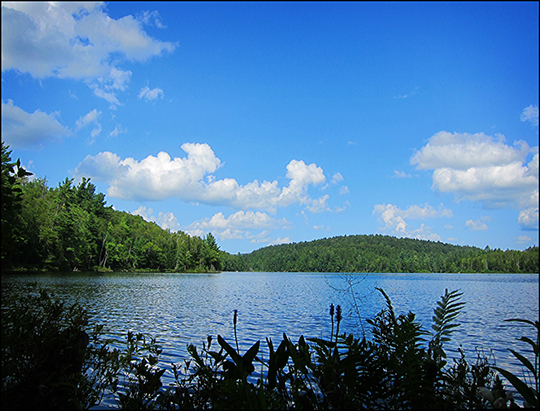
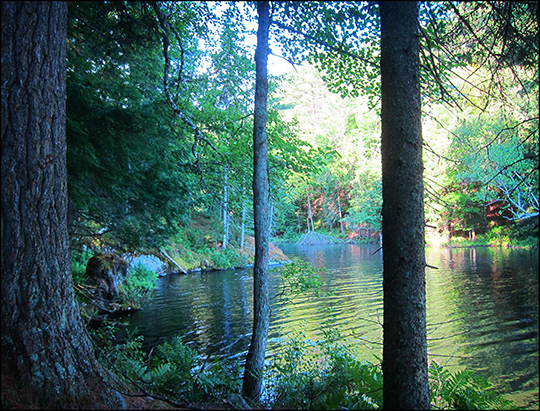
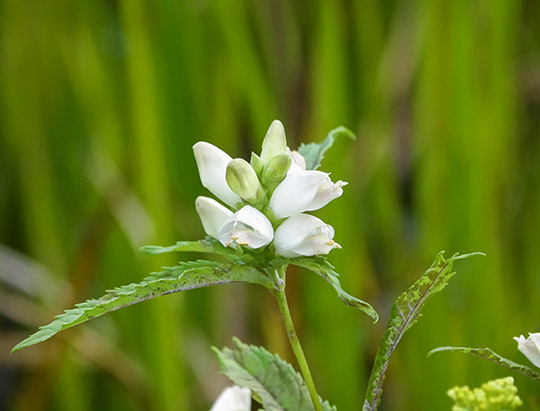
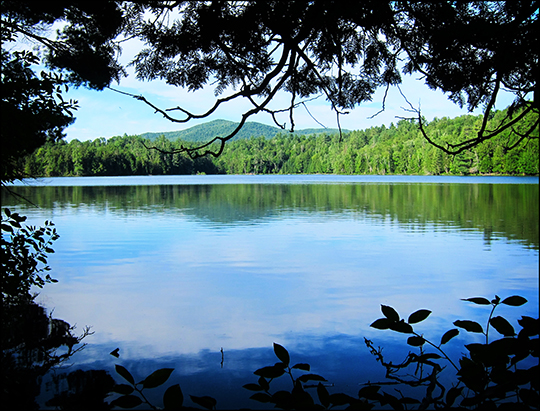
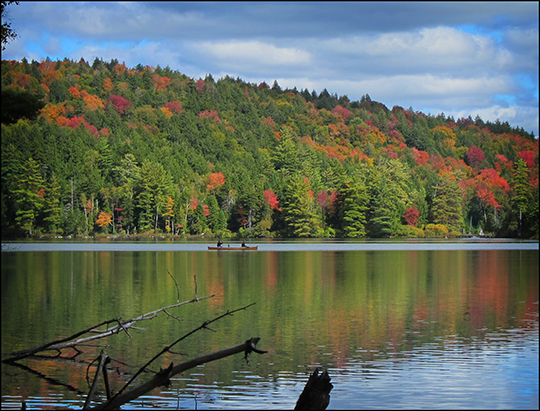


The Black Pond Trail at the Paul Smith's College VIC is a 2.3-mile scenic nature trail which passes through several Adirondack habitats: conifer forest, mixed wood forest, and a wetland area on the south end of Black Pond, near Black Pond Stream (the pond's outlet).
The Black Pond Trail loops around Black Pond – a 72-acre glacial pond whose western boundary is a ridge of glacial soil and boulders, called an esker.
- Eskers in the Adirondack Mountains were created by melt-water streams, flowing under and within the glacier through tunnels in the ice. These streams built their own stream beds from rock material embedded in the glacier.
- After the glacier melted, these riverbed sediments were deposited on the landscape as winding ridges called eskers. The basin of the Black Pond was occupied by large chunks of ice, which formed a pond when it melted.
Access to Black Pond is limited to non-motorized boats. Black Pond and Black Pond Stream have been extensively studied by the Adirondack Lakes Survey Corporation, which has published a detailed report on the chemistry, lake characteristics, and land cover of Black Pond. There are two lean-tos on the Black Pond Trail: one on the southern tip of Black Pond and one on the eastern shore of the pond between Black Pond and Little Black Pond. The lean-tos are for day-use only.
Trail Overview
To walk the Black Pond Trail loop in a clockwise direction, begin at the trail head on the Keese Mills Road, near the former St. Regis Presbyterian Church.
- The initial part of the trail, near the trail head, takes you through wetland areas on both sides of the trail. Look for Painted Turtles basking on logs and listen for Spring Peepers calling in the marshy areas near the Black Pond Outlet.
- You can also see wetland plants, such as Pitcher Plant, Tall Meadow Rue, and White Turtlehead, and wetland-dwelling birds, such as Belted Kingfishers, which can often be seen fishing along this part of the trail.
The trail then parallels the Black Pond Outlet (Black Pond Stream), leading you to the lean-to on the south end of Black Pond. The trail then narrows, skirting the western shoreline of Black Pond, between the esker and the pond. The trail takes you over a foot bridge and through glades of ferns and then by a dam, then continues around the eastern shore of the pond. A clockwise tour of the Black Pond Trail ends just opposite the former St. Regis Presbyterian Church. Parking is available at the trail head on Keese Mills Road or at the St. Regis Mountain trail head.
The varied habitats provide opportunities to observe a diverse community of plants and wildlife. This trail affords the best opportunity at the Paul Smith's College VIC to see and hear Common Loons, which nest on Black Pond. This is a backcountry trail, with some narrow, rocky, and wet sections. Hiking boots are recommended.
Birds on the Black Pond Trail
Birds seen or heard along the Black Pond Trail include:
American Black Duck
American Crow
American Goldfinch
American Redstart
American Robin
Barred Owl
Bay-breasted Warbler
Belted Kingfisher
Black-and-white Warbler
Blackburnian Warbler
Black-capped Chickadee
Black-throated Blue Warbler
Black-throated Green Warbler
Blue Jay
Blue-headed Vireo
Broad-winged Hawk
Brown Creeper
Canada Goose
Cedar Waxwing
Chipping Sparrow
Common Grackle
Common Loon
Common Merganser
Common Raven
Common Yellowthroat
Great Blue Heron
Hairy Woodpecker
Hermit Thrush
Hooded Merganser
Mallard
Mourning Dove
Nashville Warbler
Northern Flicker
Northern Parula
Ovenbird
Pileated Woodpecker
Pine Siskin
Pine Warbler
Red-Breasted Nuthatch
Red-eyed Vireo
Red-winged Blackbird
Ruby-crowned Kinglet
Ruffed Grouse
Swamp Sparrow
White-throated Sparrow
Winter Wren
Yellow-bellied Sapsucker
Yellow-rumped Warbler
Wildflowers and Flowering Shrubs on the Black Pond Trail
Wildflowers and flowering shrubs seen along the Black Pond Trail include:
Canada Mayflower
Clintonia
Common Wood Sorrel
Cuckoo Flower
Dewdrop
Fireweed
Foamflower
Goldthread
Painted Trillium
Partridgeberry
Pickerelweed
Pink Lady's Slipper
Pitcher Plant
Spotted Touch-me-not
Starflower
Swamp Milkweed
Tall Meadow Rue
White Meadowsweet
White Turtlehead
White Water Lily
Whorled Wood Aster
Wild Sarsaparilla
Wintergreen
- The plant list was generated from field notes and photographs from 2004 through 2021.
- The bird list was generated from eBird checklists (Black Pond, Franklin County, New York), plus field notes, photographs, and videos from 2010 through 2021.
